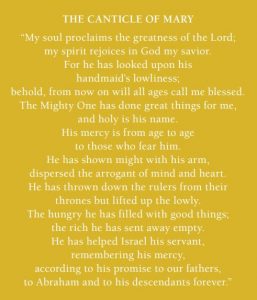Order of Malta
- About The Order
-
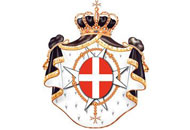
About the Order The Sovereign Military Hospitaller Order of Saint John of Jerusalem of Rhodes and Malta is one of the oldest institutions of Western and Christian civilization. The 13,500 Knights and Dames remain true to its principles – nurturing, witnessing and protecting the faith and serving the poor and the sick.
- The Order
- Seat in Rome
- Grand Master
- Organization Chart
- Permanent Observer Mission
- The Magistral Library
- International News
- Other U.S. Associations
- Other National Institutions
-
- American Association
-
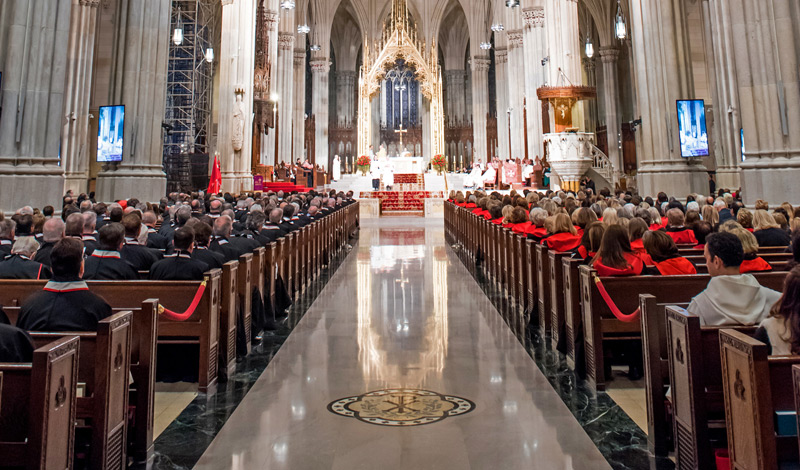
The American Association Founded in 1927 as the first association of the Order of Malta in the Americas, the association is headquartered in New York City with over 2,000 Knights, Dames and volunteers in over 30 Areas working with the poor, sick, and incarcerated and giving witness to the Catholic faith.
- History
- Leadership
- Membership
- Finances
- Auxiliary/Associates
- Year of Formation
- Area Web Sites
- Latest News
- Spirituality
-
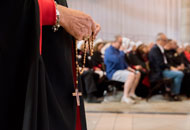
Spirituality Knights and Dames join the Order of Malta to pursue their spiritual growth over a path laid out by Blessed Gerard more than nine hundred years ago, seeking to nurture and witness the Faith and assist the sick and the poor.
- Daily Prayer of the Order of Malta
- Daily Readings and Reflections
- Saints and Blesseds
- Spiritual Outreach Calls
- Chaplains’ Corner
- Subpriory of Our Lady of Lourdes
- Association Retreats
- Fall/Winter Spiritual Initiative
- Eucharistic Ministry Online Course
- Spirituality In Action
-

Spirituality in Action Members are involved in hands-on work at over 100 hundred organizations, including food banks, hospitals, pregnancy support centers, homeless shelters and mentoring programs for at risk children.
- Prison Ministry
- Overview
- Lourdes Pilgrimage
- Pilgrimage for Life
- Wisconsin Pilgrimage
- Baby Steps Camino
- Respect Life
- Annual Investiture
- Malta Camp USA
- St. John Committee
- Area Grants Program
- Association Newsletters
- Calendar & Events
- Donate Now
-
Donations & Payments You can make a donation, pay your Annual Contribution as a member, purchase a Mass Card, register for AmazonSmile, and more. Be sure to review the Association’s Privacy Policy and Account Agreement.
- Donations & Payments
- Privacy Policy
- Account Agreement
- Mass Cards
- Called to Serve
- Contact Us
-
- Home / Spirituality in Action /
Lourdes Pilgrimage /
Pilgrimage By Year /
2017 Lourdes Pilgrimage / International Coordination
International Coordination
Preparing for the International Pilgrimage of the Sovereign Order of Malta to Lourdes in 2017
by Rev. Fr. Guy Tardivy, O.P.
“The Almighty has done great things for me!” The Magnificat of Hope
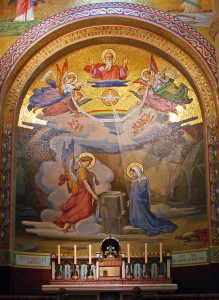 At the close of the year of the Jubilee of Mercy, giving us a roadmap through his Apostolic Letter Misericordia et misera, Pope Francis emphasized the joy of forgiveness that wells up in the one who has experienced it. On this subject he says, “Mercy arouses joy, for the heart opens up to the hope of a new life.” Pointing to the example of the adulterous woman and another sinful woman of the Gospel, he says, “what joy… has sprung from the hearts of these two women! … Forgiveness has finally made them feel free and happy as never before. The joy of forgiveness is inexpressible, but it appears in us whenever we experience forgiveness” (Misericordia and misera, 2).
At the close of the year of the Jubilee of Mercy, giving us a roadmap through his Apostolic Letter Misericordia et misera, Pope Francis emphasized the joy of forgiveness that wells up in the one who has experienced it. On this subject he says, “Mercy arouses joy, for the heart opens up to the hope of a new life.” Pointing to the example of the adulterous woman and another sinful woman of the Gospel, he says, “what joy… has sprung from the hearts of these two women! … Forgiveness has finally made them feel free and happy as never before. The joy of forgiveness is inexpressible, but it appears in us whenever we experience forgiveness” (Misericordia and misera, 2).
In this way, the Lord helps us to turn towards the future with hope. The Pope says, “God’s mercy endures for all ages” (Psalm 136); “From generation to generation it embraces every person who puts his trust in it, and transforms it by giving it its own life” (Misericordia and misera 2).
Here we discover the theme of Lourdes for this year, 2017: “The Lord has done wonders for me, The Magnificat of hope.” We refer to the joy and jubilation expressed in the canticle of the Magnificat (Luke 1:46-55), where God fills Mary with wonder and Mary responds to God by singing of His mercy (Luke 1:50 and 1:54).
This theme fits with the tone set by the 25th World Day of the Sick, which took place at Lourdes on February 11th of this year. As Father André Cabes, Rector of the Sanctuary, said: “In Lourdes, we find a bath of mercy, and we come to this bath to plunge in our poor sick bodies and dried-out hearts. We are invited to look upon human suffering in the merciful way that Mary does.”
In the relationship between Mary and St. Bernadette, we see the joy and the fruitfulness of a life which has allowed God to enter within it; the joy of the small, the humble, and of those suffering from pain or illness. Mary, who completely welcomed the grace and love of God, came to Lourdes to pour into the heart of the humble Bernadette an all-powerful love that continually gives of itself — a love that strengthens and gives hope.
We remember last year, whether we were in Lourdes or in our home dioceses, that as part of the Jubilee celebrations we departed from our usual activities and walked through the Gate of Mercy, which is a sign of Christ, the only Gate of access to the Father. When we went through the Gate, marking ourselves with holy water in the Sign of the Cross, we reminded ourselves of the grace of our baptism and prayed that it be renewed. This gesture helped us to express our invisible but profound inner reality, recalling the gift of divine life in baptism and the calling that flows from it in our lives. Filled with grace, through reconciliation with the Lord, we have become missionary disciples of Mercy.
By contemplating Christ on the Cross of Calvary, we have experienced the love of God that comforts, forgives and gives hope. At the foot of the Cross we contemplated the examples of the Virgin Mary and Saint John. With St. Bernadette, we learned to welcome Mary as Mother of Mercy: Mary, Help of the Sick; Mary, Refuge of Sinners; Mary, Comforter of the Afflicted.
Let us pause for a moment to look again at the second part of the Magnificat, which proclaims mercy. Mary says, “His mercy extends from age to age” (Luke 1:50), and “He has remembered His promise of mercy” (Luke 1:54). In this powerful prayer, we hear that God has scattered the proud, He has overthrown the mighty, He has lifted up the lowly. It is not only in the past that God worked miracles, according to Mary’s prayer. He continues to fulfill His promises in the present and will do so for all eternity.
Mercy brought forth, in the virginal womb of Mary, the Child who came from heaven: Jesus, the Savior. This is the same Jesus who revealed mercy as the supreme requirement for those who wish to imitate the Father.
So it is that, after the healing of a man possessed by a demon, Jesus says to him, “Go home to your own household and tell them what the Lord has done for you; how He has shown mercy to you” (Mark 5: 19). We see that Jesus connects, in this one sentence, the miracle that God performed for this man and an exhortation to praise God for His mercy. Is this not an echo of the Magnificat? Is it not the same message that is sent out to us from Lourdes?
With St. Luke, we see Mary trembling with joy as she prays, just as Jesus trembles as He blesses His Father with these words: “I thank you, Father, Lord of heaven and earth, that you have hidden these things from the wise and understanding and revealed them to little children; yes, Father, for such was your gracious will” (Luke 10: 21-22).
This “Yes, Father” that was exclaimed by Jesus in the jubilation of His heart is connected, paradoxically, to His humble prayer in Gethsemane: “Abba, Father! For You, everything is possible… But not my will but Yours be done” (Mark 14, 36). And when we hear Jesus say in Gethsemane that for God “everything is possible” we hear an echo of “nothing is impossible to God” — the words
of the Angel Gabriel to Mary at the Annunciation. Then, when Jesus says, “not my will but Yours be done,” we think of Mary’s answer to Gabriel: “Let it be done to me according to your word”. Thus, Jesus’s own hymn of joy is connected to the Magnificat of Mary.
In a similar way, St. Paul expressed his own prayer of exultation: “Praise be to the God and Father of our Lord Jesus Christ, the Father of compassion and the God of all comfort, who comforts us in all our troubles, so that we can comfort those in any trouble with the comfort we ourselves receive from God” (2 Cor 1: 3-4). This is precisely the invitation given to us in Lourdes, a unique place in the world where “the most miserable and suffering are ‘exposed.’ Those who are usually hidden encounter those who may be unwilling to see, and they show to us our frailties, our weaknesses, and our handicaps…” as Father André Cabes has said.
During this pilgrimage to Lourdes, we call upon the Virgin Mary as the Help of the Sick, Refuge of Sinners, and Consoler of the Afflicted. This helps us to enter into the spirit of humility and service by which we in the Order of Saint John of Jerusalem are bound to live, following the example of Blessed Gérard. We recommit ourselves to the service of the poor and the sick. Mary is for us an unfailing example, giving merciful consolation to the physically disabled; listening to the broken or hardened of heart.
Mary is also a help to those who serve. She strengthens those who help others. She is always waiting to receive those who seek healing of heart and soul and who long for consolation. Let us entrust to Mary the whole Church, which is the abode of Mercy, and ask Mary especially to safeguard unity among all believers. Mary, who is also known as the Queen of Mercy, will continue her vocation to heal and instruct the faithful in the heart of the Church.
Let us never forget that the praise that Mary offers to God is praise of God’s merciful love, which rains down on those who love Him. The core of our Marian piety is to unite ourselves to Mary’s prayer of praise. Truly, the most beautiful prayer that we can offer God is to make our souls like Mary’s — to sing a song of praise like hers in a spirit of humility and service.
Rev. Fr. Guy Tardivy O.P.
Conventual Chaplain Grand Cross “ad honorem”
General spiritual director International Pilgrimage of the Order of Malta to Lourdes
This article was originally published in the Hospitallers, Volume 17, Spring 2017.

Order of Malta
American Association, U.S.A
122 East 42nd Street
Suite 1900
New York, NY 10168
(212) 371-1522
